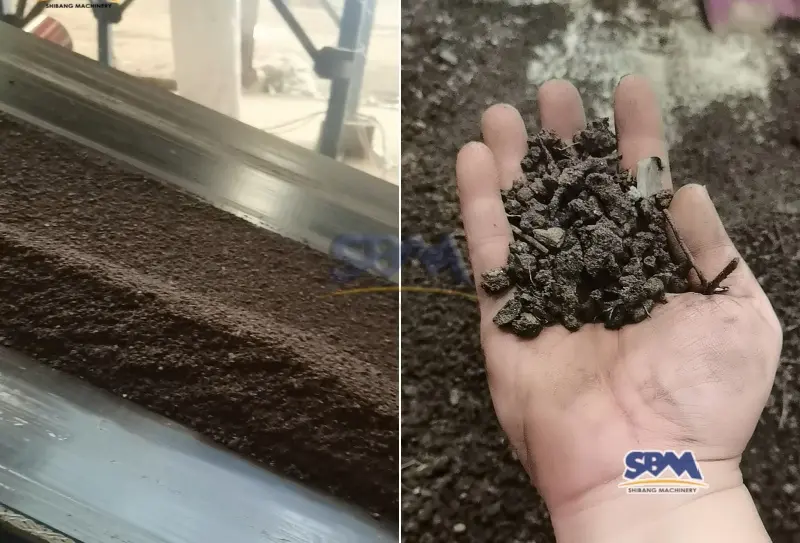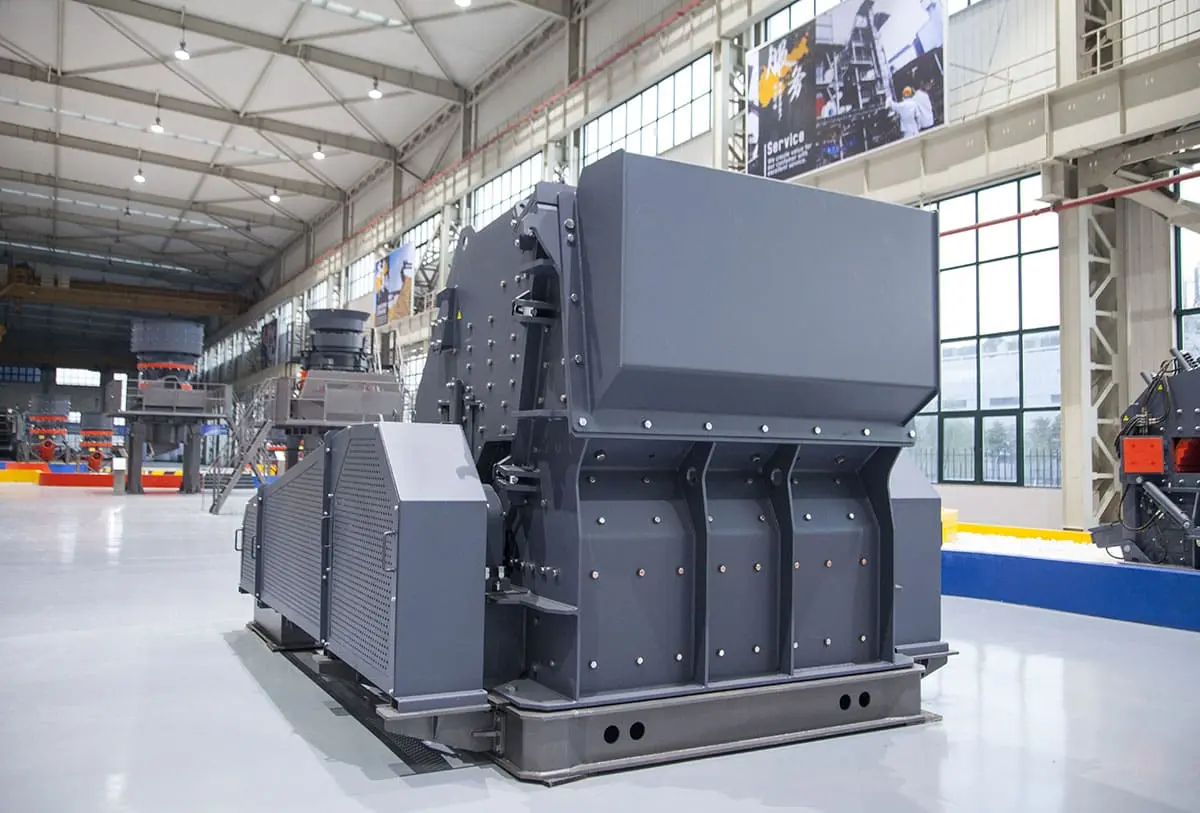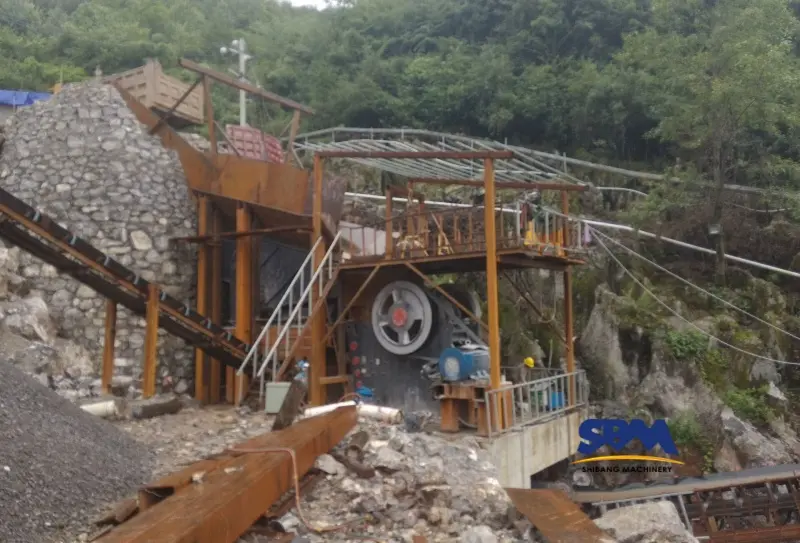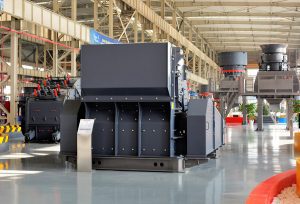ईमेल: [email protected]
ठेचून स्लॅग
मुख्यपृष्ठ » चिरलेला दगड » ठेचून स्लॅग
मुख्य सामग्री
कोणत्याही मोठ्या बांधकाम साइटवर चाला, महामार्ग प्रकल्प, किंवा आजकाल काँक्रीटची वनस्पती, आणि तुम्हाला कदाचित या कोनाचे ढीग दिसतील, कधीकधी काचेचे दिसणारे साहित्य. ती तुमच्या आजोबांची खडी नाही. ते ठेचून स्लॅग, आणि मोकळेपणाने, आपण गोष्टी कशा बनवतो यात शांतपणे क्रांती होत आहे. खूप वेळ, ते टाकले गेले किंवा दुर्लक्ष केले गेले - फक्त “औद्योगिक कचरा.” उत्तम संसाधनाचा किती प्रचंड अपव्यय! मला आठवते की काही वर्षांपूर्वी एका ग्रिझ्ड साइट सुपरिटेंडंटने माझ्या हातात एक तुकडा टाकला होता. “ते वजन जाणवा? ती कडकपणा? आम्ही गेल्या वर्षी ओलांडलेल्या रस्त्यांवर नदीतील खडी वापरणे बंद केले. हे सामान टिकते.” तो प्रचार विकत नव्हता; तो खंदकातून अहवाल देत होता. स्लॅग एकूण काही प्रयोगशाळेतील प्रयोग नाही; ते कठीण आहे, स्टील मिल्स आणि पॉवर प्लांट्सच्या अग्निमय हृदयात जन्माला आलेली व्यावहारिक सामग्री, आता जमिनीवर त्याचा योग्य सन्मान मिळत आहे. चला फ्लफ कट करूया आणि ते का कार्य करते याबद्दल पितळ टॅक्स बोलूया.
तर, कुचलेला स्लॅग म्हणजे नक्की काय? ब्रेकिंग इट डाउन
ठेचून स्लॅग जीवनाची सुरुवात वितळलेल्या खडकाप्रमाणे होते - अक्षरशः. जेव्हा तुम्ही स्टील बनवत असाल किंवा लोखंड गळत असाल, अशुद्धता शीर्षस्थानी वाढते. ते तुमचे आहे स्लॅग. हे सर्व गोंधळात टाकू नका, तरी. ब्लास्ट फर्नेस स्लॅग (BFS) लोह उत्पादनातून येते - जेव्हा लोह धातू त्या विशाल भट्टीत कोकला भेटते तेव्हा ते सह-उत्पादन असते.
हवेने हळू हळू थंड करा? तुम्ही चंकी होतात, दाट एअर-कूल्ड स्लॅग. ते उच्च-दाबाच्या पाण्याच्या जेटमध्ये टाका? ते फ्लॅश-कूलिंग तयार करते दाणेदार स्लॅग - एक वालुकामय, काचेची सामग्री जी सिमेंट बनवण्यासाठी सोने असते. मग आहे स्ट्राइक चोरी. कच्च्या लोखंडाचे स्टीलमध्ये परिष्करण झाल्यावर तेच उपउत्पादन होते, सामान्यतः मूलभूत ऑक्सिजन भट्ट्यांमध्ये (बीओएफ) किंवा इलेक्ट्रिक आर्क फर्नेस (EAF). हे सामान्यतः BFS पेक्षा कठीण आणि घन असते, मोठ्या खड्ड्यात थंड केले. की? हे एकसमान नाही “स्लॅग” त्याचे व्यक्तिमत्व - त्याची ताकद, त्याची रचना, अगदी त्याचा रंग - तो कुठून आला यावर पूर्णपणे अवलंबून आहे कसे ते थंड झाले. या सर्वांवर समान उपचार करणे प्रत्येक पिकअप ट्रकला कॉल करण्यासारखे आहे “कामाचे वाहन” - तांत्रिकदृष्ट्या खरे, परंतु जेव्हा तुम्हाला गंभीर टन भार उचलण्याची आवश्यकता असते तेव्हा अत्यंत दिशाभूल होते.

ग्लोइंग पिट्स पासून ग्रेडेड एग्रीगेट पर्यंत: द ग्रिटी प्रोसेसिंग स्टोरी
कच्चे वळणे, सुसंगत मध्ये कठोर स्लॅग, विश्वसनीय ठेचून स्लॅग जादू नाही; हे हार्डकोर मटेरियल हँडलिंग आणि मेकॅनिकल एल्बो ग्रीस आहे. बाहेर बसलेला भव्य साठा चित्र, हवामान. पहिला थांबा? प्राथमिक क्रशर – सामान्यत: एक प्राणी जबडा क्रशर जे मोठ्या भागांवर हसते. विचार करा हायड्रॉलिक रॅम्स स्टीलच्या प्लेट्स एकत्र करून त्या रॉक-हार्ड स्लॅगला क्रॅकरप्रमाणे स्नॅप करतात. मग, ते दुय्यम क्रशिंग वर आहे. शंकू क्रशर अनेकदा येथे मध्यवर्ती अवस्था घ्या, गोष्टी आणखी खाली बारीक करणे, किंवा कधी कधी क्षैतिज शाफ्ट प्रभावक ते ऍप्रनवर फोडून टाका, एक धारदार निर्मिती, अधिक कोनीय आकार – रस्त्याच्या तळामध्ये एकत्र लॉक करण्यासाठी योग्य.
द वास्तविक गुप्त सॉस? स्क्रीनिंग. प्रचंड कंपन करणारे पडदे हलवा आणि क्रमवारी लावा स्लॅग एकूण अचूक आकारात - गिट्टीचा दगड, ठोस एकूण, रस्ता आधार सामग्री, निचरा खडक. ही पायरी चुकवा, आणि तुमच्याकडे एक निरुपयोगी गोंधळ आहे. धुण्यामुळे दंड किंवा धूळ उडू शकते. सिमेंटसाठी नियत दाणेदार स्लॅगसाठी, ते वाळवले जाते आणि बारीक पावडर बनते (GGBS). या प्रक्रियेसाठी शिक्षेसाठी तयार केलेल्या गंभीर किटची मागणी आहे. कंपन्या आवडतात एसबीएम चीन फक्त क्रशर विकत नाहीत; ते विशेषतः स्लॅगच्या अपघर्षकतेसाठी आणि परिवर्तनशीलतेसाठी डिझाइन केलेल्या इंजिनीयर सिस्टमची विक्री करत आहेत. हे कार्यक्षमतेबद्दल आणि उत्पादन मिळवण्याबद्दल आहे ज्यावर तुम्ही तुमच्या प्रकल्पावर पैज लावू शकता.
का त्रास? स्लॅगचे पंच-तुम्ही-चेहऱ्याचे फायदे
अस्पष्ट विसरा “हिरवा” एक सेकंदासाठी आश्वासने. प्रॅक्टिकल बिल्डर्स आणि डीओटी प्रत्यक्षात का करतातनिवडा ठेचून स्लॅग? कारण त्यामुळे खरी डोकेदुखी दूर होते:
- हे मालवाहू ट्रेनप्रमाणे वजन वाहून नेते: विशेषतः स्ट्रोक चोरणे. ती घनता? ते थेट भाषांतरित करते गोंधळात टाकणारे भार सहन करण्याची क्षमता. मी 18-चाकी गाड्यांच्या हँडलसह बनवलेले सबबेस मशमध्ये बदलल्याशिवाय पाहिले आहेत, जिथे जवळील चुनखडीचे तळ पाच वर्षात उखडले. ते सूक्ष्म नाही.
- इट स्टेज पुट: त्या दातेरी, उग्र कण? ते लेगोससारखे एकत्र लॉक करतात. गुळगुळीत नदीच्या खडकासह एक उंच तटबंध बांधण्याचा प्रयत्न करा. आता कोनीय वापरून पहा स्लॅग एकूण. स्थिरतेतील फरक फक्त मोजता येण्यासारखा नाही; तुम्ही करू शकता पहा ते. आणि ओल्या रस्त्यावर? ते पोत टायर्समध्ये चावण्यासारखे काहीतरी देते. जेव्हा जीवन ओळीवर असते तेव्हा घर्षण महत्त्वाचे असते.
- इट टेक्स अ बीटिंग: योग्य प्रकारे प्रक्रिया केली ठेचून स्लॅग चुरा होत नाही. हे फ्रीझ-थॉ सायकल्सवर हसते जे कमी एकत्रितपणे विस्कळीत करते. पाऊस पडला की ते सूपकडे वळत नाही. म्हणजे कमी खड्डे, कमी वारंवार दुरुस्ती, आणि काळाच्या कसोटीवर टिकणाऱ्या संरचना. कमी डाउनटाइम, कमी आजीवन खर्च. साधे गणित.
- सातत्य हा राजा आहे: आधुनिक वनस्पती वितरीत करतात स्लॅग एकूण जे चष्मा पूर्ण करते, बॅच नंतर बॅच. आपण काय मिळवत आहात हे आपल्याला माहिती आहे. जेव्हा तुम्ही काँक्रीट मिक्स करता किंवा धावपट्टी तयार करता तेव्हा त्या अंदाजाची किंमत सोन्यामध्ये असते. कोणतेही ओंगळ आश्चर्य नाही.
टेबल 1: क्रशड स्लॅग वि. ओल्ड-स्कूल रेव - थंड, कठीण तथ्ये
| साइटवर काय महत्त्वाचे आहे | ठेचून स्लॅग (ठराविक स्टील किंवा एअर-कूल्ड बीएफएस) | तुमची सरासरी नैसर्गिक रेव | का स्लॅग दिवस जिंकतो |
|---|---|---|---|
| किती कठीण आहे? (आलिंगन द Lss) | 15-25% तोटा (खूप प्रतिरोधक) | 25-45% तोटा (जलद परिधान करू शकता) | स्लॅग रहदारीमध्ये बराच काळ टिकतो |
| आकार & पोत | तीव्र कोन, खडबडीत पृष्ठभाग | गोलाकार, अनेकदा गुळगुळीत | चांगले एकत्र लॉक, कमी हालचाल |
| प्रति घन यार्ड वजन | जड (विशेषतः स्टील स्लॅग!) | फिकट | उच्च भार क्षमता, कमी सेटलमेंट |
| ते पाणी शोषून घेते का? | सहसा कमी तहान लागते | स्पंज होऊ शकतो | कमी गोंधळ, चांगले ड्रेनेज, स्थिर |
| पकड घटक (घर्षण कोन) | उच्च (35-45+ अंश) | लोअर (30-38 अंश) | उत्तम उतार स्थिरता, सुरक्षित रस्ते |
| बॅच-टू-बॅच विश्वसनीयता | रॉक सॉलिड (योग्य प्रक्रिया केल्यावर) | खड्ड्यावर अवलंबून आहे | तुम्ही कशासह बांधत आहात ते जाणून घ्या |
जिथे ही सामग्री प्रत्यक्षात त्याचे ठेवा कमावते: नो-नॉनसेन्स ॲप्लिकेशन्स
ठेचून स्लॅग काही विशिष्ट प्रयोगशाळा कुतूहल नाही. ते बाहेर आहेकार्यरत:
- तुमच्या टायर्सखाली: हे त्याचे ब्रेड आणि बटर आहे. रस्ते आणि महामार्गांसाठी अनबाउंड बेस आणि सबबेस म्हणून, स्लॅग एकूण राजा आहे. त्याचा निचरा उत्कृष्ट आहे (पाणी साचलेले मश नाही), जड ट्रक अंतर्गत त्याची स्थिरता पौराणिक. डांबरी मिश्रणात टाका, विशेषतः पृष्ठभाग अभ्यासक्रम, आणि स्किड रेझिस्टन्स नंबर जंप होताना पहा. छेदनबिंदूंसारखी उच्च-जोखमीची ठिकाणे, रॅम्प, विमानतळ धावपट्टी? स्लॅग चमकते. सुरक्षितता स्वस्त नाही; ही सामग्री वितरित करते.
- तुमच्या काँक्रीटच्या आत: साठी काही नैसर्गिक दगड स्वॅपिंग एअर-कूल्ड स्लॅग काँक्रिटमधील एकूण केवळ इको-पॉइंट्स नसतात. ते घनतेचे बनवते, कठोर ठोस. त्या कमी शोषणाचा अर्थ असा होतो की आपण पाण्याचे प्रमाण बदलू शकता, संभाव्य उच्च अंतिम सामर्थ्याकडे नेणारे. पाया, पुल डेक, हेवी-ड्युटी फुटपाथ - अशी ठिकाणे जिथे दीर्घायुष्य अनाकलनीय आहे.
- गाड्या होल्डिंग: रेलरोड गिट्टी हे एक क्रूर काम आहे. सतत कंपन, प्रचंड भार, हवामान टोकाचा. स्ट्राइक चोरी, त्याच्या घनता आणि तीक्ष्ण कडा सह, त्या संबंधांना इतर कशासारखेच लॉक करते. ते झपाट्याने निचरा होते आणि पाउंडिंग अंतर्गत पावडरमध्ये बदलण्यास प्रतिकार करते. रेल्वेमार्ग गडबड करत नाहीत; ते ते वापरतात कारण ते कार्य करते.
- भरणे & जमिनीला आकार देणे: तटबंदीसाठी किंवा राखीव भिंतीच्या मागे स्थिर भराव आवश्यक आहे? ठेचून स्लॅग चांगले कॉम्पॅक्ट करते आणि उच्च कातरणे शक्ती देते. शंकास्पद चिकणमातीच्या फिलमधून हेक मारतो जे ओले झाल्यावर हलते. त्याचे ड्रेनेज गुणधर्म पाण्याचा दाब वाढण्यास प्रतिबंध करतात - भिंतींना मूक मारणारा.
- आर्मरिंग शोरलाइन्स & चांगले दिसत आहे: लहान आकार उत्कृष्ट पाईप बेडिंग किंवा ड्रेनेज लेयर्स बनवतात. मोठा, टोकदार तुकडे रिप्राप बनतात - धूप विरूद्ध किनारपट्टीसाठी चिलखत. ते टिकाऊ म्हणून लँडस्केपिंगमध्ये देखील त्याचा मार्ग शोधते, कमी देखभाल सजावटीचा दगड जो त्याचा रंग ठेवतो. अष्टपैलू? तुम्ही पैज लावा.
टेबल 2: व्हॉट स्लॅग कुठे वापरायचे - कॉन्ट्रॅक्टरची चीट शीट
| जॉब टू बी डन | नोकरीसाठी सर्वोत्तम स्लॅग प्रकार | तुम्ही काय मिळवाल | सामान्य आकार आवश्यक |
|---|---|---|---|
| रोड बेस/सबबेस (हेवी ड्युटी) | स्ट्राइक चोरी, दाट एअर-कूल्ड BFS | अतुलनीय स्थिरता, निचरा, लोड समर्थन | 1.5″ दंडापर्यंत खाली, 3/4″ – 0 |
| डांबरी पृष्ठभाग (पकड हवी) | स्ट्राइक चोरी (उच्च PSV) | गंभीर स्किड प्रतिकार, दीर्घायुष्य | 1/2″, 3/8″ खडबडीत, स्लॅग वाळू |
| काँक्रीट एग (पाया, डेक) | एअर-कूल्ड BFS | चांगली ताकद, टिकाऊपणा, पाण्याची मागणी कमी | 3/4″, 1/2″ |
| रेल गिट्टी (मुख्य ओळ) | स्ट्राइक चोरी | लॉक-इन संबंध, जलद निचरा, क्रशिंगचा प्रतिकार करा | 1.5″ x ३/४″, 2″ x १″ |
| स्ट्रक्चरल फिल (तटबंदी) | एअर-कूल्ड बीएफएस किंवा स्टील स्लॅग | कॉम्पॅक्ट राहते, मजबूत, नाले | मिश्र आकार (उदा., 3″ – 0) |
| ड्रेनेज स्टोन (भिंतींच्या मागे) | एअर-कूल्ड BFS | पाणी वाहते, अडकत नाही | 1″ – 1/2″, 3/4″ – 3/8″ |
| रिप्रप (लहरी हल्ला) | मोठे स्टील किंवा BFS | भारी, कोनीय, वाहून जाणार नाही | 6″ – 18″, खदान चालवा |
हं, हे हिरवे आहे - पण ते फक्त केकवर बर्फ घालणे आहे
पहा, पर्यावरणीय कोन वास्तविक आणि महत्त्वपूर्ण आहे. लँडफिल्समधून लाखो टन ही सामग्री वळवणे? प्रचंड विजय. प्राचीन टेकडी खड्ड्यांमध्ये बदलण्यापासून वाचवणे? एकदम. द्वारे जतन केलेली निखळ ऊर्जा नाही खाण, क्रशिंग, and hauling rock halfway across the state? प्रचंड. ठेचून स्लॅग विद्यमान भौतिक प्रवाहाचा लाभ घेते – औद्योगिक सहजीवनातील हे अंतिम आहे. पण क्रूरपणे प्रामाणिक असू द्या: जर त्याची कामगिरी कमी झाली किंवा नशीब लागत असेल, कोणीही त्याचा वापर करणार नाही, ग्रीन क्रेडिट्स किंवा नाही. सुंदर गोष्ट आहे, त्याचे कार्यप्रदर्शन आणि टिकाऊपणा हातात हात घालून जातात. टिकाऊपणा म्हणजे कमी वारंवार पुनर्बांधणी – संसाधनांची दीर्घकालीन बचत. स्थानिक उपउत्पादनाचा वापर केल्याने अनेकदा रिमोट क्वारीच्या तुलनेत अंतर कमी होते - इंधन आणि उत्सर्जन कमी होते. ठोस बांधणे चांगले वाटते आणि हुशार, आपण ग्रहासाठी फक्त खोल खड्डा खोदत नाही हे जाणून घेणे.
ठीक आहे, चला अफवांना संबोधित करूया: चिंता & स्मार्ट लोक त्यांना कसे हाताळतात
स्लॅग सूज किंवा रसायने धुतल्याबद्दल काही चर्चा ऐकल्या? हं, पूर्वी कधी कधी असे होते, मुख्यतः गोष्टी करण्याच्या जुन्या पद्धतींसह किंवा जेव्हा स्ट्रोक चोरणे बरोबर हाताळले नाही. मुख्य त्रास? मुक्त चुना किंवा मॅग्नेशिया सारखी अस्थिर खनिजे जी क्रश करण्यापूर्वी पूर्णपणे स्थिरावली नाहीत. या करू शकता नंतर हळूहळू पाण्याशी प्रतिक्रिया द्या आणि सामग्री विस्तृत करा. पण इथे गोष्ट आहे: चांगल्या कंपन्या हे मिळवा. प्रोसेसर ताजे स्लॅग ताबडतोब क्रश करणे टाळतात. साहित्याचा साठा घराबाहेर होतो.
हवामानानुसार वेळ निघून जातो - काहीवेळा अनेक वर्षे - पाऊस आणि वातावरणातील CO₂ यांच्या संपर्कात. कठोर चाचणी होते (ASTM D4792 विस्तार चाचणी मानक पद्धत म्हणून काम करते) कोणतेही क्रशिंग सुरू होण्यापूर्वी. चालू असलेल्या तपासण्या साठमारीवर लक्ष ठेवतात. सामान धुण्याची काळजी? कठोर चाचणी नियम (जसे TCLP आणि SPLP चेक) अंतिम खात्री करा ठेचून स्लॅग त्याच्या कामासाठी सुरक्षित आहे – मग ते रस्त्याखाली असो, काँक्रीट मध्ये, किंवा घाण भरा. तळ ओळ? तुम्ही मोजून कोण खरेदी करता. अज्ञात ढीग टाकणाऱ्या काही स्केच विक्रेत्याकडून स्लॅग घेऊ नका. आजूबाजूला असलेल्या विश्वसनीय पुरवठादारांकडून चाचणी पेपर मिळवा. त्यांनी किती वेळ त्यांच्या स्टीलच्या स्लॅगला बाहेर बसू दिले ते विचारा, विशेषतः. जेव्हा ते योग्यरित्या केले जाते, हे मुद्दे हाताळले जातात, गालिचा अंतर्गत स्वीप नाही.
लोखंडी घोडे: क्रशर & पडदे जे घडतात
तुम्ही स्लेजहॅमरसह कच्च्या स्लॅग ढीगांना प्रीमियम एकूणात बदलत नाही. यासाठी शिक्षेसाठी बांधण्यात आलेल्या गंभीर यंत्रणेची मागणी आहे. स्लॅग नाश्त्यासाठी स्वस्त उपकरणे खातात. तुम्हाला समर्पित ठिकाणी दिसणारा ठराविक सेटअप येथे आहेस्लॅग प्रक्रिया संयंत्र, एसबीएम चीनमधील मजबूत प्रणालींप्रमाणे (sbmchina.com):
- द बिग स्क्वीझ (प्राथमिक क्रशिंग): हेवी-ड्युटी जबडा क्रशर (SBM चा विचार करा C6X मालिका - टाक्यांप्रमाणे बांधले). याला सुरुवातीचा फटका बसतो, आटोपशीर भागांमध्ये दगड तोडणे. अप्रत्याशित ढेकूळ हाताळताना हायड्रॉलिक समायोजन आणि ओव्हरलोड संरक्षण हे महत्त्वाचे आहे.
- आकार देणे (दुय्यम क्रशिंग): शंकू क्रशर (SBM HPT/HST) येथे कामाचे घोडे आहेत, अंतिम उत्पादनाच्या आकारावर उत्कृष्ट नियंत्रण ऑफर करणे. चांगल्या कंक्रीट कार्यक्षमतेसाठी अधिक घन आकार हवा आहे? क्षैतिज शाफ्ट इफेक्टर्स (SBM CI5X) ऍप्रन विरुद्ध सामग्री फोडणे, ते अधिक स्वच्छपणे फ्रॅक्चर करणे. हा टप्पा कण आकार परिभाषित करतो - कार्यप्रदर्शनासाठी महत्त्वपूर्ण.
- त्याची क्रमवारी लावत आहे (हृदय - स्क्रीनिंग): मल्टी-डेक कंपन करणारे पडदे (SBM S5X) वाटाघाटी न करण्यायोग्य आहेत. इथेच तुम्ही प्रवाहाला तुमच्या मौल्यवान उत्पादनांमध्ये विभाजित करता: गिट्टी, बेस कोर्स, काँक्रीट दगड, वाळू. उच्च कार्यक्षमता आणि टिकाऊपणा हे सर्वोपरि आहे – पडद्यांना धडकी भरते.
- फाइन ट्युनिंग (तृतीय क्रशिंग/वाळू तयार करणे): विशिष्ट दंड किंवा उत्पादित वाळू आवश्यक आहे? अनुलंब शाफ्ट इफेक्टर्स (प्रत्येकजण) (SBM VSI6X मालिका) साधन आहेत. ते एकमेकांच्या विरुद्ध कण खडक करतात, त्यांना आकार देणे आणि उच्च दर्जाची स्लॅग वाळू तयार करणे.
- हलणारे पर्वत (पोचवत आहे & हाताळणी): मजबूत वाहक, फीडर, आणि साठा उपकरणे प्रवाह चालू ठेवतात. धूळ नियंत्रण पर्यायी नाही - ते एक नियामक आणि शेजारी असणे आवश्यक आहे. पाणी फवारणी प्रणाली किंवा बंद कन्व्हेयर्स सामान्य आहेत.
योग्य प्लांटमध्ये गुंतवणूक करणे - विशेषत: स्लॅगच्या अपघर्षकतेसाठी आणि संभाव्य परिवर्तनशीलतेसाठी अभियंता - हा खर्च नाही; सातत्यपूर्ण उत्पादन गुणवत्ता आणि अपटाइमसाठी हा विमा आहे. मोबाइल क्रशर मोठ्या स्लॅग साठ्यावर साइटवर प्रक्रियेसाठी लवचिकता देतात. SBM संपूर्ण बोर्डवर उपाय प्रदान करते.
स्लॅग खरेदी करणे? जळू नका - स्मार्ट सोर्सर व्हा
सर्व नाहीठेचून स्लॅग समान तयार केले आहे. आपला प्रकल्प आणि आपली प्रतिष्ठा संरक्षित करा:
- प्रतिष्ठा सर्वकाही आहे: मूळ स्लॅग कोणी बनवला? (प्रमुख स्टील मिल? प्रतिष्ठित स्रोत?) त्यावर प्रक्रिया कोणी केली? बांधकाम एकूण बाजारपेठेत ओळखल्या जाणाऱ्या स्थापित नावांसह जा. आजूबाजूला विचारा.
- चाचणी अहवाल किंवा दूर जा: मागणी वर्तमान, सर्वसमावेशक चाचणी डेटा. हे ऐच्छिक नाही. असणे आवश्यक आहे: श्रेणीकरण (चाळणी विश्लेषण), आलिंगन द Lss, सुदृढता (सोडियम/मॅग्नेशियम सल्फेट), विस्ताराची शक्यता (विशेषतः स्टील स्लॅगसाठी – ASTM D4792), आणि पर्यावरणीय लीचिंग डेटा (संबंधित दूषित घटकांसाठी TCLP/SPLP). प्रमाणपत्रांमध्ये ASTM किंवा EN मानकांचा संदर्भ असावा.
- तुमचा प्रकार जाणून घ्या: तुम्ही एअर कूल्ड बीएफएस खरेदी करत आहात का?? स्ट्राइक चोरी (BOF/EAF)? दाणेदार? प्रत्येकजण वेगळ्या पद्धतीने वागतो. ते तुमच्या अर्जात बसत असल्याची खात्री करा. गृहीत धरू नका.
- डोळे चालू: साठ्याकडे जा. सामग्री आकाराच्या अंशामध्ये सुसंगत दिसते का? सर्व काही जास्त धूळ लेप आहे? (खराब धुणे/धूळ नियंत्रण दर्शवते). चांगली कोनीयता एक व्हिज्युअल प्लस आहे.
- वय ही फक्त एक संख्या नाही (स्टील स्लॅगसाठी): विशेषतः प्रोसेसरला विचारा: “या स्टील स्लॅगने गळीत होण्यापूर्वी किती काळ हवामानाचा साठा केला?” महिने? वर्षे? त्यांचे उत्तर त्यांच्या मेहनतीबद्दल बरेच काही सांगून जाते. योग्य वृद्धत्वामुळे विस्ताराचा धोका कमी होतो.
- पुरवठादार माहित-कसे: समजणारा पुरवठादार निवडा बांधकाम, फक्त ओढणे नाही. त्यांना अर्जांवर चर्चा करता आली पाहिजे, कामगिरी इतिहास, आणि संभाव्य मर्यादा जाणूनबुजून. त्यांचे तांत्रिक समर्थन मोलाचे आहे.
हे असण्याबद्दल नाही अवास्तव; हे व्यावसायिक असण्याबद्दल आहे. संशयास्पद स्त्रोताकडून स्वस्त स्लॅग अयशस्वी तपासणी किंवा उपायांमध्ये दहापट जास्त खर्च करू शकतात. अगोदर वेळ घालवा.
लढाई वि. नेहमीचे संशयित: साइट पर्यवेक्षकाचा दृष्टीकोन
जेव्हा रबर रस्त्याला भेटतो (अक्षरशः), कसे करतेठेचून स्लॅग स्टॅक अप?
- वि. नैसर्गिक रेव: रेवच्या गोलाकार कडा त्याच्या अकिलीस आहेत’ टाच. तो रोल करतो, it shifts. स्लॅग एकूण locks. Gravel might win on initial price sometimes in specific locations, but when you factor in longevity, reduced maintenance, and performance under load (especially heavy trucks), slag often delivers better value over the asset’s life. Finding high-quality, consistent gravel is also getting tougher.
- वि. Crushed Limestone/Granite: These are the established players. Good crushed stone is excellent aggregate. स्लॅग एकूण often matches or beats its strength and durability, particularly steel slag’s hardness against abrasion. The environmental edge (recycled content, reduced extraction) is becoming a bigger factor in bids and specs. Cost is often competitive, especially near industrial sources. Logistics matter.
- वि. Natural Sand: Granulated slag sand is a different beast for cement. But crushed slag sand fractions? Their angularity creates superior interlock for pipe bedding or as concrete sand compared to smooth natural sand, improving stability and reducing settlement.
The decision isn’t always black and white. Local availability is huge. Project specs matter (उदा., mandated skid resistance favors steel slag). Butठेचून स्लॅग consistently proves it’s not just an alternative; it’s often a superior first choice, blending top-tier performance with undeniable sustainability cred.
Where’s This Headed? Not Just Waste Anymore
ठेचून स्लॅग isn’t standing still. New ideas keep coming. Researchers are working on better ways to treat slag before use, aiming to wipe out any last concerns about swelling. Exciting tests are happening with super-fine slag powders in top-grade concrete mixes, boosting strength and lifespan even more. The big dream? Seeing if some slags can capture and lock away CO2 – turning this material into a carbon storage tool.
Picture that! As countries worldwide enforce tougher rules on construction emissions and require recycled materials, स्लॅग एकूण fits perfectly. It’s no longer a ‘maybe’ material; it’s turning essential. Crusher technology keeps improving too – smarter, more efficient machines from companies like SBM China mean processing becomes cleaner and cheaper. The future for this old industrial leftover? Looking rock-solid. Truthfully, I expect it to become the standard pick for major roads and bridges within 10-20 वर्षे. The benefits for both performance and our planet are simply too powerful to overlook.
Build Smart, Build Tough, Build Responsible
ठेचून स्लॅग has shed its ‘waste’ reputation completely. It’s now a trusted, high-performing building material that delivers real-world advantages exactly where needed: supporting heavy truck loads, strengthening concrete mixes, and securing railroad tracks. Its toughness, stability, and grip aren’t just lab results – they’re proven daily on job sites worldwide. Sure, buying from reliable suppliers with strict quality checks is essential – that’s just smart practice with any construction material.
The extra win? निवड स्लॅग एकूण makes your building project greener. It saves untouched land, cuts landfill waste, and often slashes the environmental cost of your gravel supply. As technology improves and eco-friendly building becomes urgent, ठेचून स्लॅग is changing from a useful alternative to a basic ingredient in strong infrastructure. Next time you pick materials, don’t just default to old favorites. Seriously consider ठेचून स्लॅग. It’s a choice that combines proven results, cost savings, and environmental care. That’s not just quality construction – that’s building for tomorrow. Let’s start using this material where it belongs.



